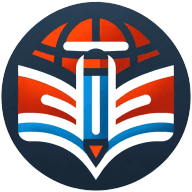3 Impactful Education Policy Changes: What We’Ve Learned
Education policy is constantly evolving, with recent changes having far-reaching impacts on students, teachers, and communities. From the expansion of school choice programs to the integration of AI in online learning, these shifts are reshaping the educational landscape. Drawing on insights from experts in the field, this article explores some of the most impactful education policy changes and their implications for the future of learning.
- Florida Expands School Choice Programs
- AI and Online Learning Transform Education
- Technology Integration Reshapes Classroom Experience
Florida Expands School Choice Programs
One of the most impactful education policy changes in Florida in recent years is the expansion of school choice programs, particularly through Education Savings Accounts (ESAs) and universal private school vouchers under laws like HB 1 (2023).
What the Policy Does:
HB 1 made every K-12 student in Florida eligible for a state-funded voucher that can be used for private school tuition, homeschooling expenses, or other educational services. This expanded school choice beyond low-income or special-needs families to include virtually all Florida students.
How It Has Affected Students:
More Options: Families now have more flexibility to choose private, charter, or home education paths that fit their child's needs.
Access Challenges: While the policy aims to increase access, low-income families may still struggle with costs not covered by vouchers, such as transportation or fees.
Public School Impact: Some students have left public schools, which may lead to reduced funding for those schools due to Florida's funding-per-pupil formula.
How It Has Affected Educators:
Public School Pressure: Teachers in public schools may face larger class sizes or fewer resources as enrollment shifts.
Job Opportunities: Educators may find more employment options in private or charter schools, though often with different pay scales or certification standards.
Curriculum Differences: Private schools receiving vouchers are not always held to the same academic standards or accountability measures as public schools, which can create disparities in student outcomes.
Final Thought:
This policy has reshaped Florida's education landscape by promoting parental choice, but it has also raised concerns about equity, public school sustainability, and oversight of private educational institutions. Its long-term effects are still unfolding.

AI and Online Learning Transform Education
By far, the most impactful policy changes I've seen are the push for AI and online learning access initiatives in schools. This really gained momentum after the pandemic and now during the AI craze.
At Classweekly, we've had more teachers asking us about our use of AI and school integrations in the past 6 months than in the 2 years prior.
It's helped level the playing field for students who previously fell through the cracks, and it's also forced a lot of platforms (including ours) to rethink how we design resources to be more accessible, equitable, and easy to implement in blended or virtual classrooms.
This shift is long overdue.

Technology Integration Reshapes Classroom Experience
In recent years, one of the most significant changes in educational policy in my area has been the implementation of technology-integrated learning. This shift was accelerated by the need for remote education during the COVID-19 pandemic. Schools across the region adopted digital tools and platforms to ensure that learning continued despite school closures. This included the use of educational software, virtual classrooms, and digital textbooks.
The incorporation of technology in education has brought a notable change in how teachers deliver instruction and how students engage with the material. For instance, in a local high school, interactive simulations and virtual labs in science classes have allowed students to conduct experiments that would be too costly or dangerous to perform in a traditional classroom setting. This transition to digital learning has not been without challenges, such as issues with access and connectivity, but it has undoubtedly made education more adaptable and far-reaching. Teachers have had to adapt quickly to these new tools, which initially steepened their workload but eventually led to more personalized and efficient teaching strategies. The policy push towards technology has transformed traditional education, making it more interactive and accessible, and continues to shape new generations of students who are proficient digital navigators.


